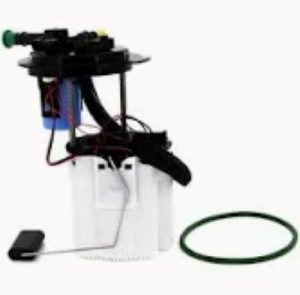Checking a fuel pump with a fuel pressure gauge starts the testing process. Typically, today's fuel-injected engines are going to run in the 40-60 psi range (in VW applications), but when we get into some of the more high-performance stuff, you're probably looking at 70 or even 100 psi of fuel pressure. A regular Toyota Camry might require 55 psi for the performance to be on par, while a turbocharged Subaru WRX could require 75 psi at full tilt. When the pressure reading drops below these specifications, it can indicate that the fuel pump is not efficiently operating, causing engine problems like rough idling or reduced acceleration.
To start testing, find the Schrader valve on top of the fuel rail that gives you unrestricted entrance right into the gas system. Fuel Pressure is determined by attaching a Fuel Pressure gauge to this valve, representing what the pump itself is actually putting out. As example, a fuel pump that delivers less than 40 psi in a system that requires 55 to 60 psi indicates a problem. This could be due to a worn pump, clogged filter (placed before the inlet of the jet pumps or in front of the suction line) or pressure regulator malfunctioning.
Another important step in fuel pump diagnosis is voltage testing. The majority of pumps 12 volts require to be able to operate in the usual way. When you test the voltage at the fuel pump electrical connector, it lets you know if enough power is getting to the fuel pump. For example, if the voltage from an alternator used to provide 14 volts of power is suddenly reduced to 10 volts this would reduce the fuel delivery on a pump by more than 20%, resulting in lean conditions that can destroy an engine. This test is conducted with a multimeter by connecting the positive lead to the pump's power wire and the negative lead grounded to the vehicle frame.

A flow test will show how much fuel the pump is delivering over a specific period of time. A general rule of thumb is that a good high-performance fuel pump should flow about 300-450 liters per hour (LPH). If a pump flows only 250 LPH and 350 LPH is required, that might mean the pump is clogged or worn out, so another one has to be used. When it comes to high horsepower performance cars like the GT500 where fuel demands are much higher (again exceeding 600rwhp) any reduction in flow could mean significant fuel starvation when the car is under load.
Pump problems may also be diagnosed with auditory testing. Fuel Pump Too Noisy or Whining A whining or buzzing noise from within the fuel tank will be audible whether or not an electric fuel pump is working. When switched on properly a fuel pump should emit a steady hum. One of the thresholds noise level, as a noisy fuel pump usually is one that's on its way out the door with more than 100,000 miles of service.
Testing the Fuel Pump Relay essentially checks if the relay that supplies power to the pump is up and running your fuel system correctly. Perform this by swapping the fuel pump relay with another known functioning relay from the vehicle fuse box. If the fuel pump works with the replacement relay the original is bad and has been causing intermittent loss of power to the fuel pump.
Furthermore, when testing a fuel pump, be sure to also consider the quality of the fuel. If any fuel in the system is of low quality or contaminated, this may clog up the pump's filter and restrict its flow and pressure. Dropping in a whatever fuel sample to verify no sediment or water is in the fuel system. This debris can cause internal damage and result in 20-30% higher pump failure rates on vehicles operated in areas with low fuel quality, necessitating more frequent replacement of the pumps.
Click the following link and you will find some more detailed resources on testing your Fuel Pump, along with recommended testing tools.